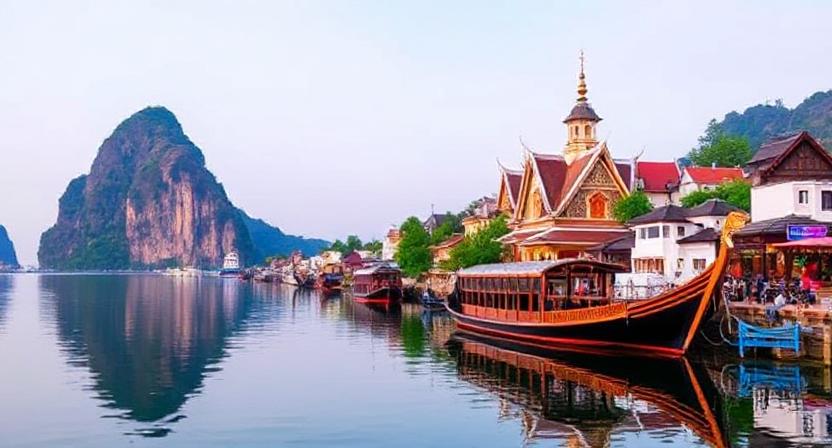Published on
September 21, 2025
The Polish and Turkish markets are high-spending segments that are vital to the long-term development of Thailand’s tourism sector. By welcoming high-income travelers from these nations, Thailand is seeking to raise its tourism profile and raise the average spend per traveler. Such travelers, typically looking for luxury travel, cultural experiences, and tailormade services, are a key customer segment for Thailand’s tourism economy. Their outlay for upmarket lodgings, high-end activities, and upscale shopping can go a long way in contributing to the country’s tourism earnings.
Tailoring Marketing Efforts to Local Preferences: Insights from Turkish and Polish Tourists
Thailand’s tourism authorities are learning from market trends in Turkey and Poland to develop tailored marketing strategies that resonate with the unique preferences of these travelers. For instance, Turkish tourists have a strong interest in beach holidays, cultural experiences, and luxury shopping. In contrast, Polish tourists are particularly attracted to long-haul holidays, often choosing southern Thailand’s coastal provinces and Bangkok as their preferred destinations. By studying these consumer behaviors, TAT is better equipped to craft destination-specific campaigns that appeal to different types of travelers and encourage longer stays, while promoting new tourist spots.
Expanding Thailand’s Tourism Footprint with Secondary Destinations
One of the strategic goals of TAT’s roadshows is to diversify Thailand’s tourism offerings by promoting secondary destinations beyond the usual major hubs. While Bangkok, Phuket, Pattaya, and Samui are well-established hotspots, TAT is focusing on up-and-coming destinations such as Nakhon Si Thammarat, Kanchanaburi, and Sukhothai to offer more unique experiences for travelers. These regions are being marketed as places to explore authentic Thai culture, traditional lifestyles, and natural beauty, appealing to adventure seekers and cultural enthusiasts who want to venture off the beaten path.
The Role of Luxury and Wellness Tourism in Thailand’s Future Growth
Thailand’s luxury tourism sector, bolstered by the influx of wealthy Turkish and Polish tourists, is set to play a significant role in the country’s tourism growth. By offering high-end wellness tourism experiences, such as luxury resorts, spa treatments, and holistic health retreats, Thailand is attracting those seeking rejuvenation alongside exotic experiences. Destinations like Chiang Mai, Hua Hin, and Koh Samui are becoming increasingly popular for their combination of wellness and luxury, making Thailand a top destination for affluent travelers looking for relaxation, rejuvenation, and personalized services.
Strengthening Air Connectivity to Boost Tourism Arrivals
The expansion of direct flights and air connectivity between Thailand and Turkey, as well as Poland, is crucial for maintaining the momentum of tourism growth from these regions. Turkish Airlines and Thai Airways are expanding their flight schedules between Istanbul and Bangkok, while Turkish Airlines is also introducing more flights to Phuket. This increased accessibility encourages spontaneous trips, as well as repeat visits, from Turkish and Polish tourists. Enhanced air connectivity is essential for reducing travel time and making Thailand more accessible, particularly for those traveling from European markets.
Digital Marketing and Social Media Campaigns: Reaching the Modern Traveler
As digital platforms become more integral to the tourism industry, Thailand is leveraging social media, online marketing, and influencer partnerships to increase its visibility among Turkish and Polish travelers. Targeted digital campaigns using Instagram, Facebook, and WeChat will allow Thailand to reach younger, tech-savvy travelers who are increasingly using online platforms to research and book their vacations. Additionally, the use of social media influencers to promote Thailand’s destinations and tourist experiences will create buzz and inspire travelers to explore new places and activities.
Introducing New Incentives to Attract Turkish and Polish Tourists
To further enhance tourism flows from Turkey and Poland, TAT is considering introducing new incentives for these markets, such as special discounts on airlines, accommodation, and tour packages. By partnering with local businesses and international airlines, TAT aims to offer attractive deals that encourage Turkish and Polish travelers to choose Thailand for their next vacation. These special offers will target specific segments, including luxury travelers, families, and digital nomads, ensuring that Thailand remains a top choice for travelers from both markets.
Tourism Sustainability: Maintaining Thailand’s Appeal Amid Economic Fluctuations
As Thailand’s tourism industry continues to grow, maintaining sustainability and responsibility remains a priority. The growing focus on sustainable tourism ensures that local communities, natural resources, and cultural landmarks are protected for future generations. TAT’s efforts to promote eco-tourism, green hotels, and responsible travel will attract eco-conscious travelers and reinforce Thailand’s commitment to preserving its natural beauty while promoting its cultural wealth. Ensuring that tourism growth does not negatively impact local environments is key to maintaining Thailand’s competitive edge in the global tourism market.
Strengthening Bilateral Relations Between Thailand and Turkey/Poland Through Tourism
In addition to tourism growth, these roadshows strengthen bilateral relations between Thailand, Turkey, and Poland. By engaging with government officials, tourism agencies, and private sector partners, TAT is fostering a collaborative relationship with these countries, enhancing cross-cultural ties and encouraging future collaborations. As tourism collaboration continues to expand, Thailand and Turkey/Poland are positioning themselves as key allies in the development of the global tourism sector.
A Thriving Future for Thai Tourism in Turkey and Poland
With a well-tailored marketing approach that appeals to Turkish and Polish visitors, Thailand is poised to be a top destination for tourists from both nations. Through an emphasis on luxury travel, sustainable tourism, and varied travel options, Thailand is evolving to meet the needs of the modern traveler and positioning itself for ongoing success in the international tourist market. The increasing frequency of direct flights, combined with online marketing campaigns and niche incentives, will make Thailand a leading destination for both high-end tourists and Polish and Turkish family tourists alike, guaranteeing a good future for Thai tourism in the next few years.
